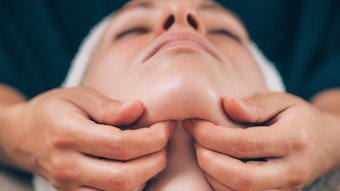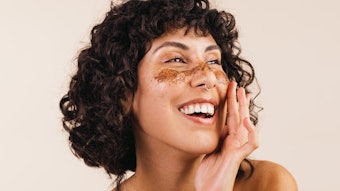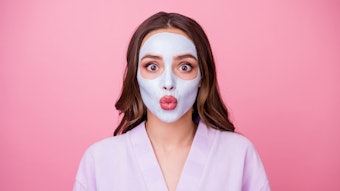
I’ve noticed a trend in recent years, and I bet you’re seeing it too. More and more clients are experiencing skin disorders, redness, sensitivity and unpredictable skin due to environment, age and lifestyle. Chances are you may not be able to tell that the skin is sensitive at first glance. So, how do you ensure you have all the “skin facts” right from the start to avoid emergencies during treatment?
At the start of every service, use the following five actions to spot danger signs and abnormalities, avoid negative reactions and ensure long-term client loyalty. Also included are five associated pro lessons to incorporate with each service.
1. Read the skin before you do anything else.
Begin every treatment by taking a first look before you remove the client’s makeup. Some estheticians wait until after they cleanse to do this, but you’ve changed the skin with the cleanse. You have to look at it before you touch the client to get a real feel of the client’s habits, makeup, etc.
Pro lesson
Treat every client like a first-time client.

Sometimes the skin can throw you a curve ball, so do not be overconfident. Estheticians often become complacent and lax, especially with long-time clients. The skin changes so much that you can never be too overcautious. Make sure to treat every client like it’s the first time you’re seeing them. This helps prevent you from missing a clue that will leave you surprised and the skin vulnerable to injury during a treatment.
2. Ask the right questions.
Don’t rely only on what you see. Wise estheticians ask their clients the right questions, including some of the following, to get the entire skin story.
- Do any areas of your skin burn, sting or itch? When does it occur?
- How long have you had symptoms?
- Are there any situations that trigger symptoms?
- Do you take medications? If so, for how long?
- How much water do you drink each day?
- Have you waxed or shaved recently?
- Do you exercise? Does it exacerbate your condition?
- Is there a time of the month or year when symptoms change or worsen?
Pro lesson
Always be investigating.
The answers to these questions may give you an additional clue to what might be causing your client’s sensitivity or sensitized skin. It will also help you decide which treatments you may need to avoid due to the circumstances.
Seasonal issues, like allergies, can do a great deal of damage to the skin. Being aware if a client has triggers in their life that cause reactions, can help you know what you may need to avoid, and what you can choose to enhance your treatment and deal with the skin that day. But...you won’t know if you don’t ask.
3. Look for vascular abnormalities.
Take note if the skin shows any of the following signs:
- A temporary flushing or blushing appearance;
- Erythema (persistent facial redness or flushing of the central area of the face);
- Enlarged red, purple or blue capillaries near skin’s surface, visible even when skin is “at rest;” and
- Skin appears normal but turns pink or red when touched (an indication of touch sensitivity).
Pro lesson
You may not know the cause, so target the symptom.
Look with your naked eye, and then look at
the skin through the magnifying lamp, examining the bare skin after you’ve removed makeup. Redness may be present when the skin is at rest,
or it may be triggered when the client does something unusual.
Do you see redness and flushing? What is causing it? We can’t know for sure, unless the client has seen a physician. Therefore, it is the symptoms that we need to focus on during treatment.
4. Check for touch sensitivities.
Gently mark a small “x” on the side of your client’s neck with the end of a tester tip or cotton swab during your skin reading. If the area immediately turns pink, bumpy or feels itchy, this is a sign that your client has touch sensitivity.
Pro lesson
Less is more.
If the client’s neck does indeed show signs o touch sensitivity, you now know not to use any physical scrubs, modalities or highly active formulas. Plus, you’ll know to lighten up your pressure when touching the client, applying product with your brushes, removing product, massaging, etc. You may even choose to not use a towel and only use disposable gauze squares during treatment.
5. Check for dehydration, the gateway to skin damage.
Dehydration is probably one of the most damaging of all skin conditions, because it leads to so many other problems, including: barrier depletion, age signs, rough texture, redness and more. Fix the dehydration, so the skin can better repair itself, grow stronger and look healthier. Make sure you know the signs, which include:
- A dull, sallow or devitalized appearance;
- Milia;
- Surface lines or crepiness;
- Dry, rough or scaly lips;
- A sandy or bumpy texture;
- Flaking, itching, scaling or irritation;
- Crepey texture around the eyes when pinched; and
- Skin that is resistant to treatment, i.e., your client claims product just ‘sits’ on the surface.
Pro lesson
Start lifting.
To check for dehydration, gently lift up on the surface of the skin. If you see tiny horizontal lines above where you’ve lifted, you’ll know that the skin is dehydrated. Check over several parts of the face.
If you see that your client’s skin is dehydrated, consider the following:
- The skin might be more sensitive and prone to irritation, so cut back on activity level during each step of the facial that day.
- Use products that are hydrating, and be generous with toner during each step.
- Don’t overuse steam, and keep the steamer arm further away from face.
- Ensure that client is not missing any crucial steps at home that may increase dehydration.
Dehydrated skin is commonly more resistive and sometimes even uncooperative. Ensure that you spend more time on hydrating and softening the skin so that you can help the skin absorb the key ingredients in every step of your treatment.
To Treat or Not to Treat

Follow your gut instinct. If the symptoms you see are chronic or more severe, they can be an indication of a more serious skin disorder, such as rosacea, eczema, psoriasis, etc., which can only be diagnosed by a physician.
When dealing with a suspected or diagnosed skin disorder, get written permission from the client’s doctor that it’s safe for them to receive a facial. Then, proceed with the appropriate treatment.
Consider having a physician’s permission form, which needs to be signed and submitted before treatment. Taking this step will not only protect your business, but it will also protect your client.
So how do you say no to a client and not lose business? Education. Explain and educate your client on why you are making your choices based on the condition of their skin that day. Your client may not be able to have the glycolic chemical peel they originally booked, but that doesn’t mean that there aren’t exfoliation methods that will deliver the results they expect. You can opt for less active enzymes here, which will deliver results without doing the skin any further damage. Remember you are the expert, and your client is relying on you to make the best decisions for their skin.












